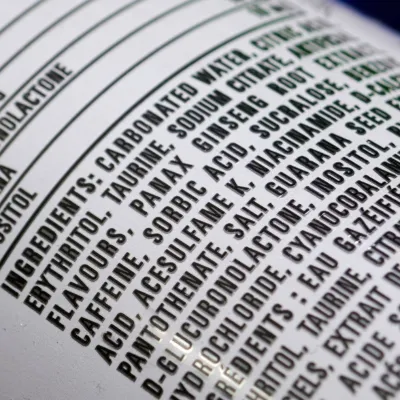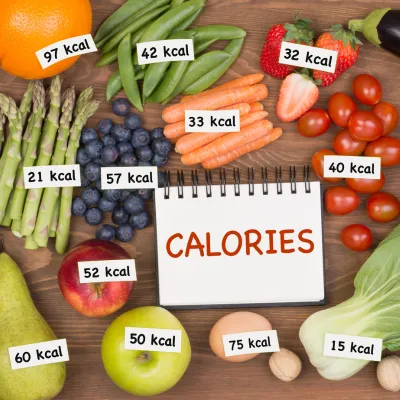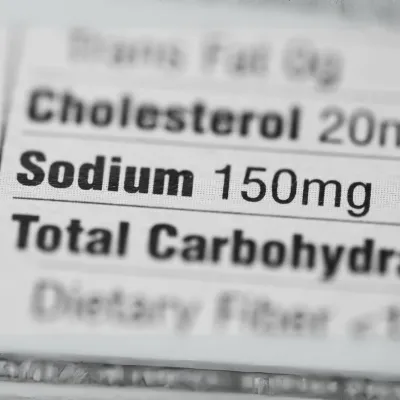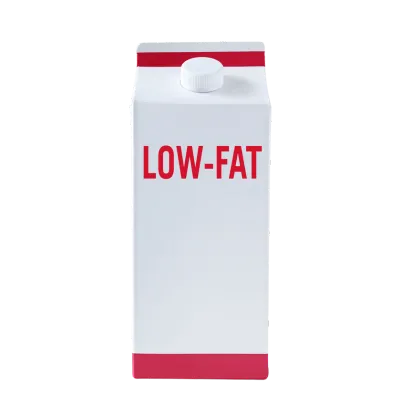Decoding Food Labels
Understanding how to read food labels is essential for anyone who is curious or concerned about what is in processed foods. Food labels provide vital information about the contents of food products, enabling consumers to make informed choices regarding their dietary intake.
Importance of Understanding Labels

Reading food labels is crucial for making healthy eating choices. Labels offer essential information regarding ingredients, nutritional content, and other important factors. By comprehensively understanding food labels, individuals can avoid harmful additives, manage dietary restrictions, and promote overall health.
Food labels can also help identify products containing controversial food additives that some consumers might wish to avoid. It is important to recognize that not all additives are harmful; many serve functional purposes, such as preserving freshness or enhancing flavor. Labels also provide the opportunity to learn about natural additives that might be more appealing to certain individuals.
Serving Size Clarity

Serving sizes on food labels are standardized to facilitate comparisons among similar items. It reflects the typical amount that people eat or drink but is not a recommendation for how much one should consume. Understanding the serving size is critical to determine the number of calories and nutrients consumed (FDA).
The serving size is shown in common household measures (e.g., cup, piece) along with its corresponding metric amount in grams (g) to provide clarity on portion sizes.
| Serving Size Example | Common Household Measure | Metric Amount (g) |
|---|---|---|
| Cereal | 1 cup | 30 g |
| Ice Cream | 1 scoop | 65 g |
| Cookie | 1 piece | 15 g |
This information is particularly useful when tracking caloric intake and understanding how much of certain nutrients (e.g., fats, sugars) is present in one serving. The updates made to serving sizes, as of 2016, reflect modern consumption habits, emphasizing the necessity of reviewing this information to understand portion sizes effectively.
For those looking to gain a deeper understanding of food labels, learning about the evolution of food additives and current labeling regulations can provide additional insights. Furthermore, exploring the preservative role in food can help consumers appreciate the purpose of certain ingredients.
You Might Also Like:
Calorie Awareness
Managing Caloric Intake

Understanding caloric content is essential for making informed decisions regarding diet and health. Calories provide a measure of how much energy is available from a serving of food. For example, a single serving of lasagna contains 280 calories. To maintain a healthy weight, individuals must balance the number of calories consumed with the number of calories their bodies use.
When reviewing food labels, it is crucial to consider both the serving size and the total caloric content. Eating more calories than the body expends can lead to weight gain, which is linked to various health issues. The processing of information from food labels is critical for health, especially when it pertains to energy balance.
Here’s a simple breakdown of calorie management based on an example food label:
| Item | Serving Size | Calories per Serving | Total Calories if Entire Package is Consumed |
|---|---|---|---|
| Lasagna | 1 cup (250g) | 280 | 1,120 (4 servings) |
| Chip Snack | 1 oz (28g) | 150 | 1,200 (8 servings) |
| Granola Bar | 1 bar (40g) | 100 | 400 (4 bars) |
Being mindful of caloric intake helps individuals choose their foods wisely. They should analyze their daily caloric needs based on lifestyle, activity level, and health goals. The next sections on a Nutrition Facts label provide insight into the amounts of specific nutrients in a product; it is therefore important to limit certain nutrients while ensuring a balanced intake.
For those aiming for a healthier diet, exploring controversial food additives and their impacts can further enhance knowledge about what is in processed food purchases. Being well-informed about natural additives, preservatives, and additives can empower consumers to make choices that align with their health objectives.
Key Nutrients to Watch
Understanding the key nutrients listed on food labels is essential for making informed dietary choices. Two crucial areas to focus on are saturated fat and sodium, along with the impact of added sugars.
Saturated Fat and Sodium

Saturated fat and sodium are nutrients often linked to adverse health effects when consumed in excess. High intake of saturated fat can contribute to heart disease, while excessive sodium intake is associated with high blood pressure and increased risk of stroke. The Nutrition Facts label clearly indicates the amount of saturated fat and sodium per serving, helping consumers monitor their intake.
| Nutrient | Recommended Daily Limit | % Daily Value (%DV) |
|---|---|---|
| Saturated Fat | < 10% of total calories | Varies based on serving |
| Sodium | < 2,300 mg | Varies based on serving |
The Percent Daily Value (%DV) on food labels aids individuals in assessing whether a certain food is high or low in these nutrients. It helps consumers interpret nutrient numbers by providing a standardized scale for daily intake.
Added Sugars Impact
Added sugars are another critical component of food labels that consumers should be aware of. The inclusion of added sugars in processed foods can lead to excessive caloric intake, which is linked to various health issues such as obesity and type 2 diabetes. The American Heart Association recommends limiting added sugars to no more than 6 teaspoons (25 grams) per day for women and 9 teaspoons (38 grams) for men.
| Common Sources of Added Sugars | Typical Sugar Content |
|---|---|
| Soda (12 oz) | ~10 tsp (40g) |
| Candy Bar | ~4 tsp (16g) |
| Flavored Yogurt | ~3-5 tsp (12-20g) |
Consumers can use the Nutrition Facts label to identify products with high levels of added sugars. Reviewing these figures is essential for understanding the overall caloric content and preventing excessive sugar consumption. Misconceptions often arise with “sugar-free” products; these can still contain significant calories, underscoring the importance of examining the full nutritional profile.
The knowledge of how to read food labels effectively enables people to make healthier choices while navigating processed food options.
You Might Also Like:
Making Nutrient Comparisons
Understanding how to compare nutrients on food labels can help individuals make more informed food choices. Two important aspects to consider are the % Daily Value (DV) and nutrient content claims.
% Daily Value Significance

The % Daily Value (%DV) on a food label indicates how much a nutrient in a serving of the food contributes to a total daily diet. This percentage helps determine if a food is high or low in a particular nutrient. For example, a food item with a %DV of 20% or more is considered high in that nutrient, while one with a %DV of 5% or less is considered low.
The %DV column allows consumers to compare food products and make dietary trade-offs by choosing products higher in nutrients they want to consume more of and lower in nutrients they wish to limit. This is especially useful when evaluating processed foods where additives may be present. For better clarity, here’s a simplified table showing the significance of %DV:
| % Daily Value | Interpretation |
|---|---|
| 0% – 5% | Low in nutrient |
| 10% – 19% | Moderate source |
| 20% and above | High in nutrient |
Using the %DV correctly can assist individuals in balancing their overall nutrient intake throughout the day. Certain nutrients like total sugars and trans fats do not have a %DV, but consumers can still utilize this metric for the nutrients that do have it.
Nutrient Content Claims

Nutrient content claims are statements found on food labels that highlight a product’s nutritional benefits, describing nutrients beyond what is listed on the Nutrition Facts label. Common claims include terms like “low sodium,” “high fiber,” “reduced fat,” and “good source of.” These claims are regulated by the FDA to ensure they are accurate and meaningful to consumers.
Comparative claims, such as “less sugar” or “fewer calories,” are also regulated and must be based on verifiable information that compares similar products. Understanding these claims can help individuals determine which foods align better with their dietary goals. By considering both %DV and nutrient content claims while reading food labels, individuals can better navigate their food choices, especially in the realm of controversial food additives and natural additives.
Common Label Reading Mistakes
Understanding how to read food labels is essential for making informed dietary choices. However, there are several common mistakes that individuals may make, often leading to misconceptions and pitfalls.
Misconceptions and Pitfalls
One common error is the belief that products labeled as “sugar-free” or “fat-free” are calorie-free. This misconception can result in dietary miscalculations, as these products may still contain significant calories compared to their regular counterparts. It is crucial to review the entire nutrition facts on the label to accurately understand calorie content (Food and Health Communications).
Many consumers tend to focus solely on front-of-package claims, such as “trans-fat-free.” While these terms are appealing, they might misrepresent the overall nutritional profile of the product. For example, a product labeled as “trans-fat-free” could still contain high levels of saturated fats. Comprehensive label reading is necessary to ensure an accurate understanding of what is in the food.
Another misconception arises when health claims on food labels give the impression that a product is healthier than it actually is. A package of fried frozen fish labeled as trans-fat-free may still have considerable amounts of saturated fats. Therefore, it is vital to scrutinize the entire label to make more informed food choices.
Front-of-Package Symbols
Front-of-package symbols can often mislead consumers. While these signs aim to simplify the selection process, they sometimes oversimplify complex nutritional information. For instance, nutrient content claims highlight specific health benefits without disclosing complete details. Terms such as “low sodium,” “high fiber,” and “reduced fat” are regulated by the FDA, but consumers should still examine the nutrition facts to see the broader context.
Health claims are also approved by the FDA and are meant to convey important health information. The FDA currently supports 12 health claims, like the links between calcium and osteoporosis and fiber-rich diets and cancer prevention (Harvard T.H. Chan School of Public Health). It is beneficial to be familiar with these claims to better understand the implications of product labeling.
In summary, caution is necessary when interpreting food labels. Misleading front-of-package symbols and claims can obstruct a clear understanding of nutritional content. Therefore, examining the nutrition facts and being aware of common misconceptions can empower individuals to make healthier choices.
Regulations and Global Perspectives
Understanding food labels goes beyond just reading the ingredients; it also involves recognizing the regulations governing the health claims and labeling requirements. This section examines health claims approval and front-of-package labeling requirements that help consumers make informed choices.
Health Claims Approval

Health claims on food labels are statements that the FDA reviews and approves, which are backed by scientific evidence suggesting that certain foods or diets may lower the risk of diseases or health-related conditions. The FDA has sanctioned 12 specific health claims that consumers may encounter, such as the connection between calcium and osteoporosis and the role of sodium in hypertension. Additionally, claims concerning fiber-containing grains, fruits, and vegetables in relation to cancer prevention, as well as the importance of folic acid in preventing neural tube defects, are also included in these approved statements.
| Health Claim | Associated Nutrient |
|---|---|
| Calcium and Osteoporosis | Calcium |
| Sodium and Hypertension | Sodium |
| Fiber, Fruits, and Vegetables and Cancer | Fiber |
| Folic Acid and Neural Tube Defects | Folic Acid |
Front-of-Package Labeling Requirements
Various countries have implemented different regulations concerning front-of-package (FOP) labels to help consumers quickly identify the nutritional quality of products. For example, Chile’s Law of Food Labeling and Advertising, effective since 2016, mandates front-of-package warning labels. These labels feature a black stop sign with warnings like “high in sugar,” “high in sodium,” “high in saturated fat,” or “high in calories” to inform consumers about potential health risks.
Implementing these warning labels has led to significant reductions in the purchase of sugary beverages, demonstrating their effectiveness as a public health strategy. By understanding these regulations and health claims, consumers can make better choices about the processed foods they buy.
Why is it important to read food labels?
Reading food labels is essential for making informed dietary choices. Labels provide vital information about the ingredients, nutritional content, and serving sizes, helping consumers manage their diet, avoid harmful additives, and adhere to dietary restrictions.
What is the serving size on a food label, and why does it matter?
The serving size on a food label reflects the typical amount people consume. It’s important because all the nutritional information on the label, including calories and nutrients, is based on this serving size. Understanding the serving size helps in accurately tracking your intake.
How do I use the % Daily Value (%DV) on food labels?
The % Daily Value (%DV) shows how much a nutrient in a serving of food contributes to a daily diet. It helps determine if a food is high or low in a particular nutrient, making it easier to compare products and manage nutrient intake. For example, 20% DV or more is considered high, while 5% DV or less is low.
What do terms like “low sodium” or “high fiber” mean on food labels?
These are nutrient content claims regulated by the FDA. “Low sodium” means the product contains 140 mg or less of sodium per serving, while “high fiber” means it provides 5 grams or more per serving. These claims help highlight specific nutritional benefits of a product.
Are products labeled “sugar-free” or “fat-free” always healthy?
Not necessarily. “Sugar-free” or “fat-free” products can still contain significant calories or other unhealthy ingredients. It’s important to read the entire label to understand the full nutritional profile and not rely solely on front-of-package claims.
What are front-of-package symbols, and should I trust them?
Front-of-package symbols aim to simplify food choices by highlighting certain nutritional aspects, but they can sometimes be misleading. It’s important to examine the full Nutrition Facts label to get a comprehensive understanding of the product.

